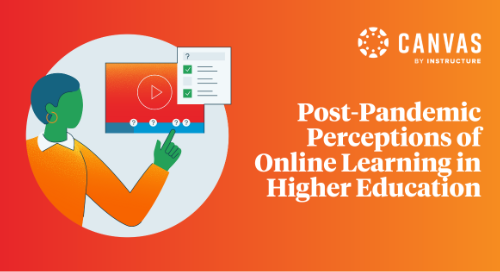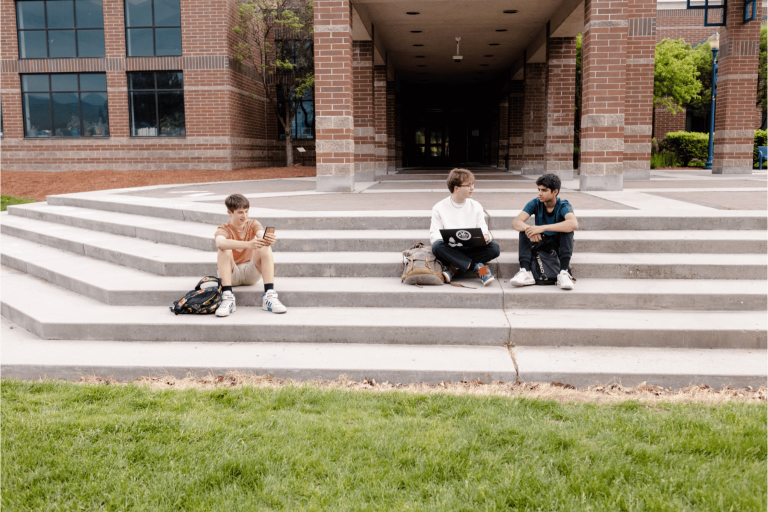
Moving forward from the impact and disruption that the pandemic created for higher education, The World Economic Forum touts the importance of online learning, advising that “lecturers and teachers should embrace the opportunities offered by digital distance learning to revolutionize education for the better.” Online learning was prevalent and increasing in popularity prior to the pandemic, but today, institutions are experiencing a fundamental and seismic shift in the perception and acceptance of widespread online education.
According to our 2022 State of Student Success and Engagement in Higher Education report, students and faculty are evolving their preferences for how they would like courses to be taught.
Preference for Online Classes Grows
A growing number of students and faculty want to take fully online courses or a mix of online and in-person courses. They also want to see more technology and digital resources used as part of the teaching and learning experience.
When it comes to students specifically, two-thirds of them want to take some courses fully online after the pandemic, although perceptions vary across regions:
-
Latin American (LATAM) students (72%) are significantly more likely than other regions to want to take some courses in a fully online format.
-
Asia Pacific (APAC) students (70%) are significantly more likely to want more technology used in in-person courses.
-
North American (NORAM) respondents (49%) are significantly less likely to want to take courses as a combination of in-person and online.
Faculty too, are evolving their preferences for online learning. Based on our 2022 findings, three-quarters of faculty want to teach some courses either fully online or a combination of in-person and online.
While LATAM faculty (87%) are significantly more likely to want to teach some courses in a fully online format, EMEA faculty (40%) are significantly less likely to want more technology used in fully in-person courses.
Additionally, since the pandemic, respondents have a more positive attitude towards using digital materials and open education resources.
Today, respondents are more likely to have a positive opinion of:
-
Using digital materials (69%)
-
Open education resources (65%)
-
Courses that combine in-person and online instruction (61%)
-
Online learning (59%)
-
Online exam proctoring (51%).
A closer look at regional preferences shows that:
-
LATAM respondents (78%) are significantly more likely to have a positive opinion of digital resources.
-
APAC respondents (78%) and LATAM respondents (77%) are significantly more likely to have a positive opinion of open education resources.
-
Admins (72%) are significantly more likely to have a more positive opinion towards online learning compared to students (56%).
Online or Hybrid? A Regional Glance
Overall, roughly two-thirds of students and faculty would like to take or teach an online or hybrid class post-pandemic.
APAC students (68%) are significantly more likely than students from other regions to want to take classes online and APAC (68%) and LATAM (63%) students are significantly more likely to want to take hybrid classes.
APAC (81%) and LATAM (78%) faculty are significantly more likely to want to want teach classes online post-pandemic compared to North America (57%) and EMEA (62%), and APAC (82%) and LATAM (77%) faculty are significantly more likely to want to want teach hybrid classes post-pandemic compared to North America (57%) and EMEA (62%).
What These Preferences Mean for Higher Education
Ultimately, higher education institutions need a strong tech stack to support student and faculty preferences for online and hybrid learning. Now’s the time to build on the successes achieved in the shift to online learning during the pandemic as higher education continues to evolve. The ability to scale up and down in online, hybrid, and in-class modalities will yield itself to student, faculty, and institutional success.
For longevity, intentional technology and purposeful training go hand in hand, and faculty training for online teaching pedagogy is more important than ever. Institutions can consider a variety of professional development approaches to best prepare their faculty, including formal training, peer-to-peer support and mentorship, and engagement in online communities, such as the Canvas Community. Training should prioritize methods to engage students virtually to foster a supportive and inclusive digital environment.
Also important? Continuing to champion the benefits and flexibility of asynchronous, on-demand courses that fit non-traditional students’ lifestyles and encourage students to take ownership of their learning.
This focus on intentional tech will not only help students in their pursuit of traditional degrees and their overall engagement, but also position them for today’s modern workforce by augmenting digital literacy and increasing skill sets.
Getting Proactive with Impact: How Foothill College Moved to Online Learning
Los Altos Hills, CA-based Foothill College was able to keep their learning environment functional during the pandemic. Using Canvas helped them build community and user confidence, as well as use dynamic communication and insightful data to identify areas that needed focus. As a result, Foothill College was able to keep everyone ‘together’ through technology, even when they were a fully remote campus. Learn how Foothill College plans to enhance the student experience and create campaigns to support adoption of Canvas going forward.
Get More Insights
For the study, we worked with Hanover Research, seeking input from 7,572 students, administrators and faculty from 2-year, 4-year, public, and private higher education institutions across 23 countries. In fielding this survey each year, our goal is to define measurements of student success, identify factors for engagement, and shed light on the path ahead for higher education.
Interested in more findings from the 2022 State of Student Success and Engagement in Higher Education?
Related Content
 Teaching-With-Tech-10-Benefits.jpg
Teaching-With-Tech-10-Benefits.jpgBlogs
 scalable-design.jpg
scalable-design.jpgBlogs
 lms_migration_blog_2.png
lms_migration_blog_2.pngBlogs